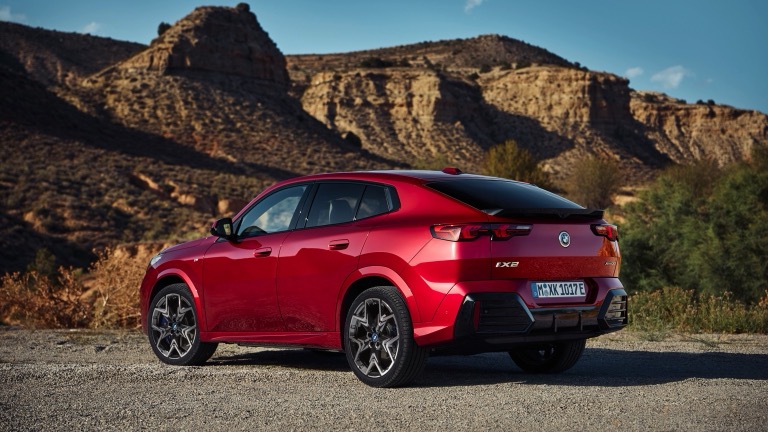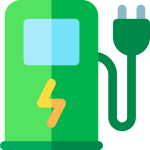
In 2025 BMW continues to sharpen its electric vehicle lineup for Australia, blending incremental updates to existing models with the debut of next‑generation cars built on its Neue Klasse architecture. For Australian drivers and fleet managers watching the EV transition, the developments represent a step change in charging capability, battery chemistry and in‑car software – even as debate continues about real‑world range and the readiness of charging infrastructure outside metropolitan corridors.
What’s arriving (and when)
- BMW iX (facelift): The brand’s flagship electric SUV has received a mid‑cycle refresh for 2025. Expect revised exterior styling, upgraded cabin tech and modest range gains versus previous iX variants. BMW Australia lists the updated iX on its global pipeline and showroom arrivals are projected for later in 2025, although exact timing and specification for local models remain subject to confirmation.
- BMW iX3 (Neue Klasse): The new iX3 is a milestone for BMW in that it debuts key elements of the Neue Klasse platform in a mid‑size SUV package. BMW’s focus here is a more efficient powertrain architecture, faster high‑voltage charging and improved energy density. The iX3 is expected in Australia in 2025; BMW has signalled a staged roll‑out as factory allocation and homologation for local markets are finalised.
- BMW iX2: The compact, coupe‑style iX2 continues in BMW’s line‑up as an urban‑oriented EV, with entry‑level single‑motor eDrive20 and performance‑oriented dual‑motor xDrive30 variants. Its smaller footprint and competitive specs make it an attractive option for private buyers and corporate lessees.
- BMW i7: BMW’s electric flagship sedan retains its focus on luxury and rear‑seat technology, including expansive rear displays (the so‑called “Theatre Screen”), premium audio systems and an emphasis on ride refinement. The i7 remains a halo model in BMW’s EV family rather than a volume seller.
Technology and what it means for drivers
- Neue Klasse architecture: BMW’s Neue Klasse represents a re‑engineering of several core EV elements – electrical architecture, battery design and software. Central to BMW’s messaging is the adoption of an 800‑volt electrical architecture and a move to cylindrical battery cells for selected models, which together are intended to support higher charging power and improved thermal management. For drivers, that should translate to shorter top‑up times and more stable performance during intensive use, although real‑world gains depend on battery size, vehicle weight and local charging conditions.
- Charging performance: BMW has claimed the Neue Klasse architecture will enable very rapid charging, with headline figures such as “adding around 300 km of range in roughly 10 minutes” quoted in some launch material. Those figures reflect optimal conditions – a very high‑power DC charger (compatible with 800V), favourable battery state‑of‑charge, and ideal temperatures. In practice motorists should expect fast‑charging gains but not always the maximum advertised numbers.
- Software and user experience: Updated iDrive systems and larger curved displays are now standard in BMW’s higher‑spec models, and Neue Klasse cars bring a renewed emphasis on integrated software, over‑the‑air (OTA) updates and digital services. This means feature improvements can arrive during ownership rather than only at point‑of‑sale, but local feature availability will depend on BMW’s Australian software rollout schedule.
- Efficiency and range: BMW’s engineering targets for Neue Klasse include improvements in electrical efficiency, which should deliver better WLTP figures and, more importantly to buyers, stronger everyday range. Exact ranges will vary across powertrain options and wheel/tyre choices.
Charging ecosystem and Australian context
- Infrastructure progress: Australia’s public fast‑charging network has expanded materially in recent years, with Chargefox, EVie, Tesla’s Supercharger network (increasingly opened up to other brands) and a growing number of regional chargers. That expansion improves the practical utility of higher charging rates, but coverage outside major cities still varies state‑by‑state. Long‑distance planning remains important for all EV buyers.
- Home charging: For many Australian EV owners, home charging will remain the primary energy source. Faster onboard charging and more efficient cars reduce reliance on public DC charging for day‑to‑day use, but buyers should budget for a quality home EV‑ready circuit and charger installation.
- Incentives and fleet considerations: Australian federal and state incentives for EVs differ across jurisdictions and continue to evolve. Businesses and lease operators should factor in local incentives, registration concessions (where applicable), fleet servicing arrangements and residual values when assessing the TCO of new EVs such as the iX3 or iX2.
Availability and pricing notes for Australia
- Timing: BMW has signalled showroom deliveries for the refreshed iX later in 2025, and the Neue Klasse iX3 is pencilled in for Australian introduction during the year. Exact timing remains dependent on production allocation and local homologation.
- Pricing: BMW’s entry‑level electric models such as the iX2 may, depending on specification and options, sit near or below the luxury car tax (LCT) threshold for some buyers in Australia, which can make them attractive leasing or company‑car options. For flagship models (i7, high‑spec iX variants) pricing will be at the premium end of the market; prospective buyers should watch official Australian price lists and retained‑value forecasts before committing.
- After‑sales and warranty: As with all EV purchases, check local warranty terms on the battery and drive components, the scope of roadside assistance for EVs, and the availability of dealer servicing for software and battery health diagnostics.
What this means for Australian buyers and the market
- More choice, better tech: BMW’s 2025 push adds clearer choice across segments – compact (iX2), mid‑size (iX3), large SUV (iX) and luxury sedan (i7) – and brings more sophisticated charging and battery tech to showrooms.
- Consider real‑world charging, not just headline numbers: Fast‑charging figures cited at global launches are useful benchmarks but vary with conditions. Australian buyers should consider charger compatibility (400V vs 800V), access to high‑power chargers on their typical routes, and expected rates of charging degradation over time.
- Leasing and fleet uptake likely to rise: Competitive pricing of smaller EVs and expanding charging networks continue to make EVs attractive for leasing and corporate fleets, especially for urban and suburban usage profiles.
- Dealer experience and software: As BMW relies more on software to differentiate its cars, the dealer experience in delivering updates and managing connected services will become a key part of ownership satisfaction.
Conclusion
BMW’s 2025 product updates and the rollout of Neue Klasse technology mark an important phase in the brand’s EV strategy for Australia. Buyers can expect tangible improvements in charging speed, in‑car software and incremental range gains, but the true benefit will depend on local charging access and real‑world driving conditions. For corporate buyers and private motorists alike, the decision to move to a BMW EV in 2025 should weigh headline tech against local infrastructure, pricing, and after‑sales support. When assessing options, enquire about real Australian specifications, warranty coverage for batteries and the practicality of high‑power charging on your regular routes.
FAQs
When will the updated BMW iX and the Neue Klasse iX3 arrive in Australia?
BMW has indicated both models will be introduced in Australia in 2025, with the refreshed iX expected later in the year. Exact timing depends on shipping, homologation and dealer allocation; contact your local BMW dealer for the latest local launch dates.
Will the Neue Klasse iX3 support 800V fast charging in Australia?
BMW’s Neue Klasse platform is designed around 800V architecture and higher‑power charging capability. However, the achievable charging speeds in Australia will depend on charger compatibility (an 800V‑capable DC charger), battery state‑of‑charge and temperature. Check local specifications for the Australian iX3 once BMW releases them.
How realistic is the claim of adding 300 km in 10 minutes?
That figure represents an idealised maximum under optimal conditions (very high‑power DC charger, favourable battery temperature and low initial state‑of‑charge). Real‑world results will typically be lower; treat such numbers as a best‑case reference rather than guaranteed routine performance.
Should I buy an iX2, iX3 or iX if I commute daily in an Australian city?
For daily urban commuting the compact iX2 or a mid‑range iX3 (if local pricing is competitive) may offer the best balance of cost, range and parking manoeuvrability. The larger iX provides greater interior space and luxury but at a higher purchase price and operating cost. Consider home charging, your typical trip length, and local public‑charger access when deciding.
How does BMW’s software/OTA approach affect ownership in Australia?
Improved software and OTA updates can keep features current and fix bugs without dealer visits, but functionality depends on BMW’s rollout schedule in Australia. Confirm which services and features are included in your local market, and discuss update procedures with your dealer.
About EV Evolution
EV Evolution is the leading online platform dedicated to Australian electric vehicle owners and enthusiasts. We foster a vibrant community, delivering essential EV news and insights, and enhancing user engagement through our innovative, AI-powered chatbot for dynamic discussions. Our mission is to empower Australian electric vehicle owners and enthusiasts by fostering a vibrant, AI-driven online community that connects, informs, and advances the nation’s electric vehicle landscape.




